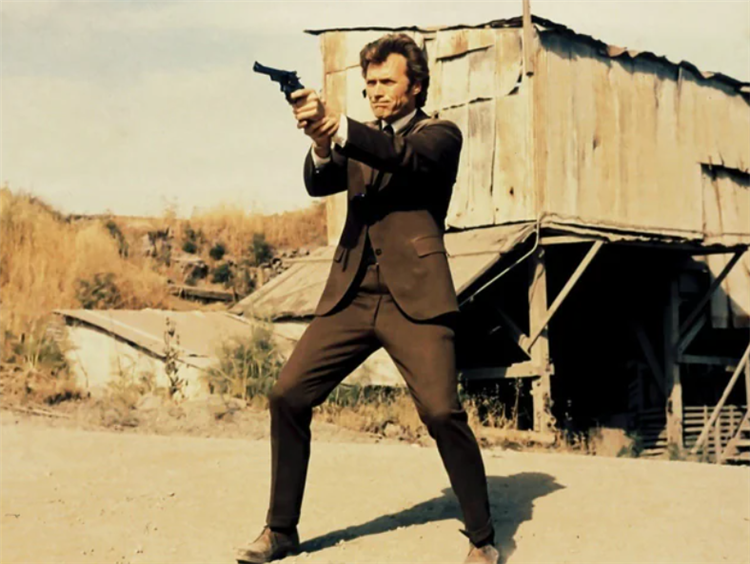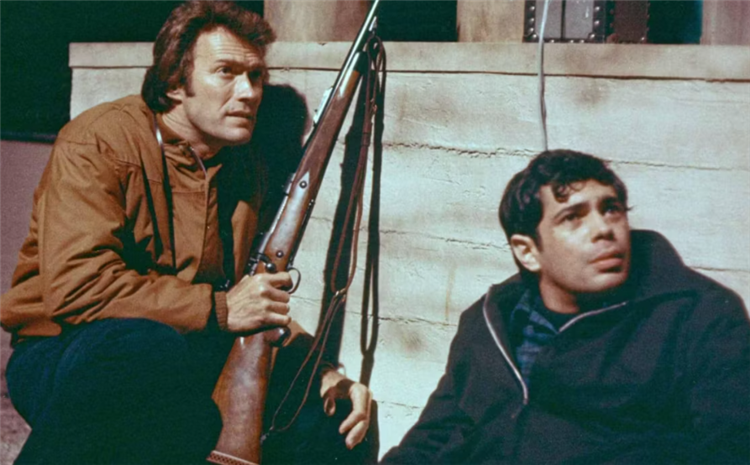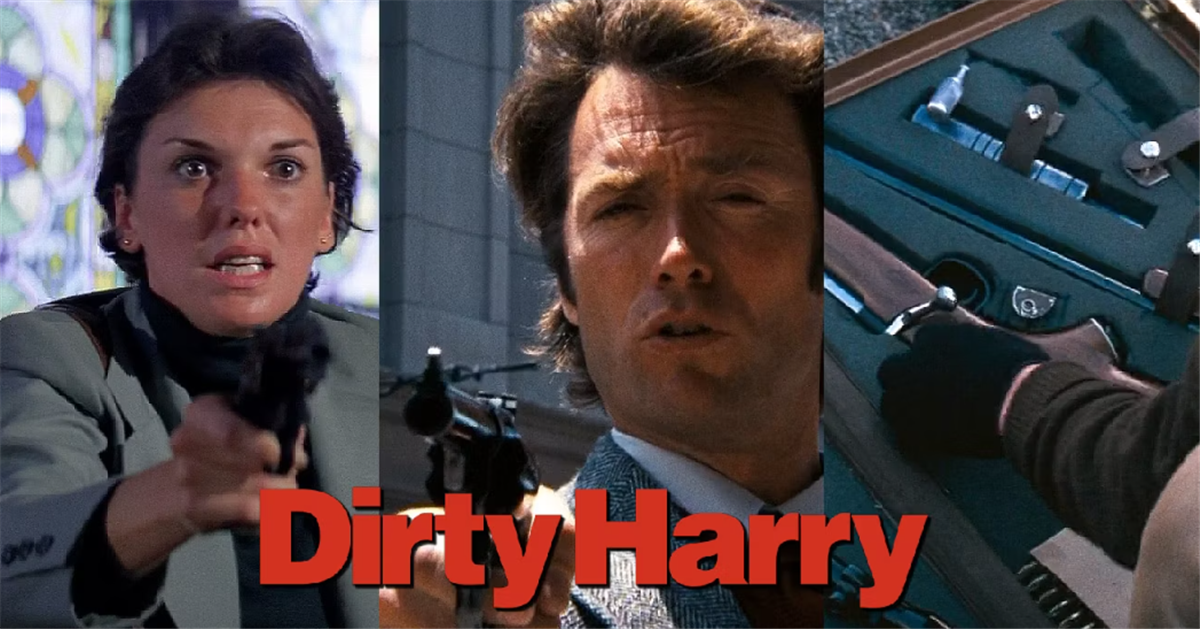A gun expert explains why Dirty Harry is the most accurate depiction of a .44 Magnum. Starring Clint Eastwood as the eponymous police inspector Harry Callahan, Dirty Harry is a 1971 crime drama about Harry’s struggle to capture a psychopathic killer who is referred to as “the Scorpio Killer.” Dirty Harry was directed by Don Siegel and featured a leading cast including Eastwood, Andrew Robinson, Harry Guardino, Reni Santoni, John Vernon, John Larch, John Mitchum, and Mae Mercer.
Speaking with Corridor Crew, gun expert Taran Butler praises the depiction of a .44 Magnum in Dirty Harry.
According to Butler, the main thing that set Dirty Harry apart from other movies that used .44 Magnum guns was the fact that Eastwood “faked the recoil.” Butler attributed this specificity to the fact that Eastwood himself had ample experience shooting guns. He compared the Dirty Harry scene to Arnold Schwarzenegger’s Red Heat, and how that movie was inspired by the greatness of Dirty Harry. Check out Butler’s quote below:
What Clint Eastwood did great is he faked the recoil. He had the gun go up, because he really shot guns. If he didn’t do that, the 44 mag would seem like it had no power.
The gunshot sound is the greatest of all time.
How Was Dirty Harry Received?
Dirty Harry Did Well Critically And Commercially

Dirty Harry was a seminal work in its genre during the time of its release, and it succeeded commercially and critically. At the box office, the film made $35.9 million, which was an exorbitant total against its $4 million budget. It was so successful that it was followed up by four sequels, including 1973’s Magnum Force, 1976’s The Enforcer, 1983’s Sudden Impact, and 1988’s The Dead Pool. While none of the sequels possessed the same originality as Dirty Harry, the film nonetheless set a precedent for those who came after it within the genre.
In addition to its commercial success, Dirty Harry also succeeded in the eyes of critics. Today, the film boasts an 89% score on Rotten Tomatoes across the 55 critics who have reviewed it over time. The over 50,000 audience members who rated the film gave it a 90% approval rating, exhibiting the widespread and enduring love of Dirty Harry.
How Guns Were Central To Clint Eastwood’s Film Roles
The Actor Got His Start In Westerns
It is interesting that Butler points out Eastwood’s knowledge of guns as critical to Dirty Harry’s success, as the film was released during a time when the actor was closely associated with the gunslinger. Before the 1971 film, Eastwood had spent over a decade working in Westerns, where he often wielded a gun. This included the Fistful of Dollars trilogy, which consisted of the films A Fistful of Dollars, A Few Dollars More, and The Good, the Bad, and the Ugly. Eastwood’s other Westerns included Hang ‘Em High, Coogan’s Buff, and the TV series Rawhide.
Even as Eastwood continued his career with more mature roles, guns were an important part of his on-screen characters. In his 1992 Oscar-winner Unforgiven, for example, Eastwood played a retired gunslinger named William Munny, paying homage to the characters that had typified his early career. Even movies like Gran Torino, wherein the actor plays a Korean War veteran, saw guns as a central feature in some ways. Tracing this element of Eastwood’s career further contextualizes why his gun work was so strong in Dirty Harry.
Eastwood’s gunslinging movies are iconic enough to hold up today in conversations about the genre. His spaghetti Westerns have particularly held up, as it was announced earlier this month that A Fistful of Dollars would be getting a remake. As this film gets made and dabbles in its gun usage (albeit with different weapons), it will be interesting to see how the reproduced version of Eastwood’s work holds up in accuracy to great films like Dirty Harry.
Clint Eastwood’s Most Critically Recognized Films Are Not Just His Westerns
But The Western Genre Was Critical In His Career

While Westerns and spaghetti Westerns were vital to Eastwood’s career, his gun-touting works are not what has earned him the most critical recognition in his oeuvre. In his career, Eastwood has won four Oscars, the first two of which were in 1993, for Unforgiven. Unforgiven earned him awards for Best Picture and Best Director, and a nod for Best Actor. While Unforgiven challenges the Western genre by making its protagonist a retired gunslinger, it is the closest to the genre among Eastwood’s Oscar-nominated works.
Eastwood’s other two Oscar wins came from the boxing drama Million Dollar Baby in 2005, for which, like Unforgiven, he won Best Director and Best Picture. In conversations about Eastwood’s work, Million Dollar Baby is often regarded as one of or even the best works by the producer-director. He was also nominated for an award for Best Actor for Million Dollar Baby. After these nominations, he went on to be nominated for three more Oscars for non-Westerns, including Letters from Iwo Jima and American Sniper.
This dissociation between the genres of Eastwood’s early career — which was founded in the Western, and the gun-laden thriller — and those that get awards recognition is fascinating to explore. This is not to say that Eastwood’s early work is of any lesser quality, as noir-style works like Dirty Harry arguably rival the quality of something like Million Dollar Baby. The thriller and spaghetti Western genre films are often a tougher sell to Oscar voters in the moment, but eventually prove to be crucial pieces of film history and, in this case, of Eastwood’s career.
Dirty Harry is not a Western either, by any means, but it does see Eastwood in an era of genre films. It fits the archetype of a neo-noir thriller, though, and as is clear from the Corridor Crew video, guns are as central to the aesthetics of the movie as they are to any of Eastwood’s Western works. Dirty Harry is not the film that earned him the greatest award recognition, but it will remain a model of what makes Eastwood’s career great.
